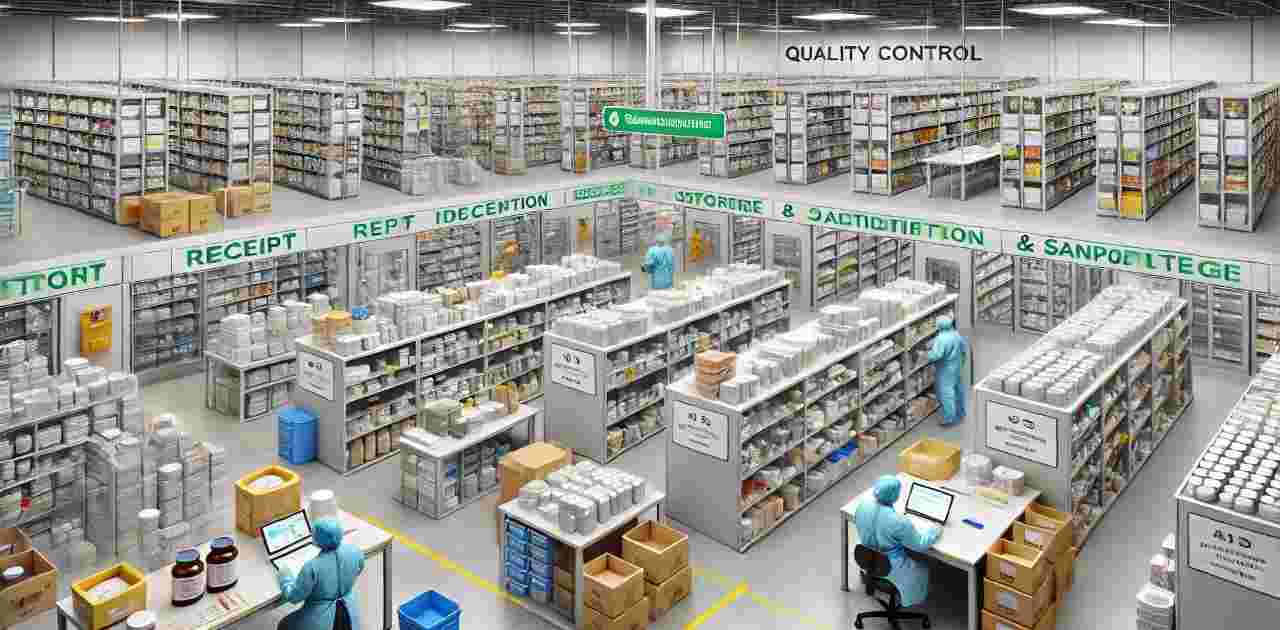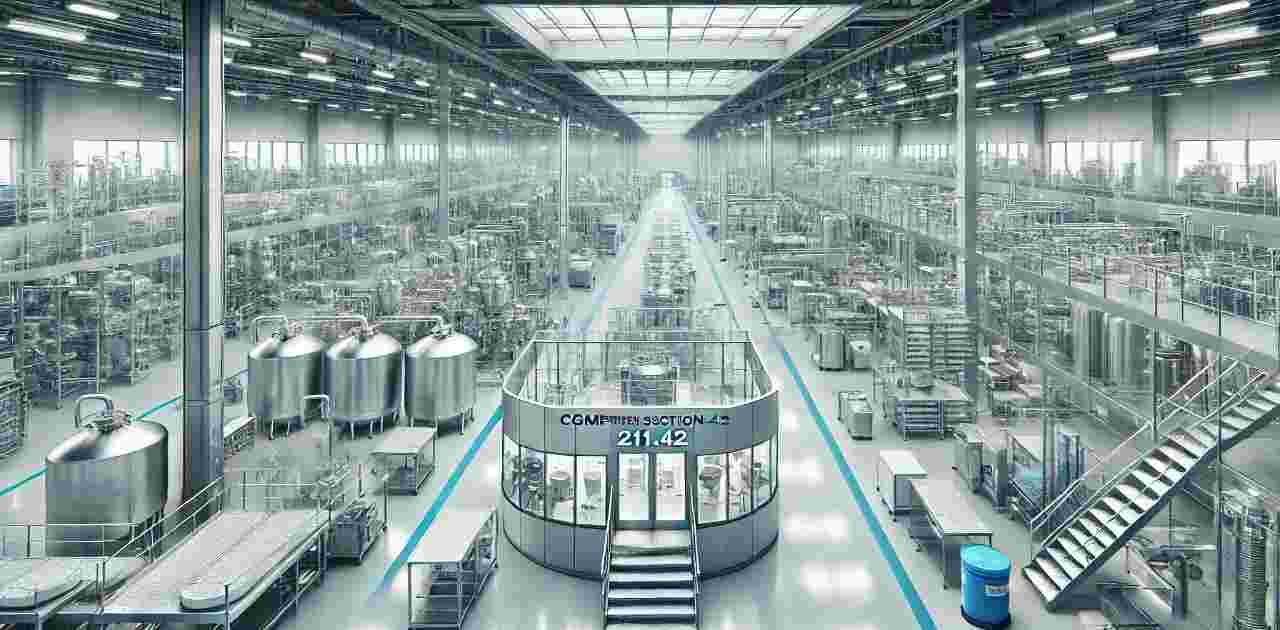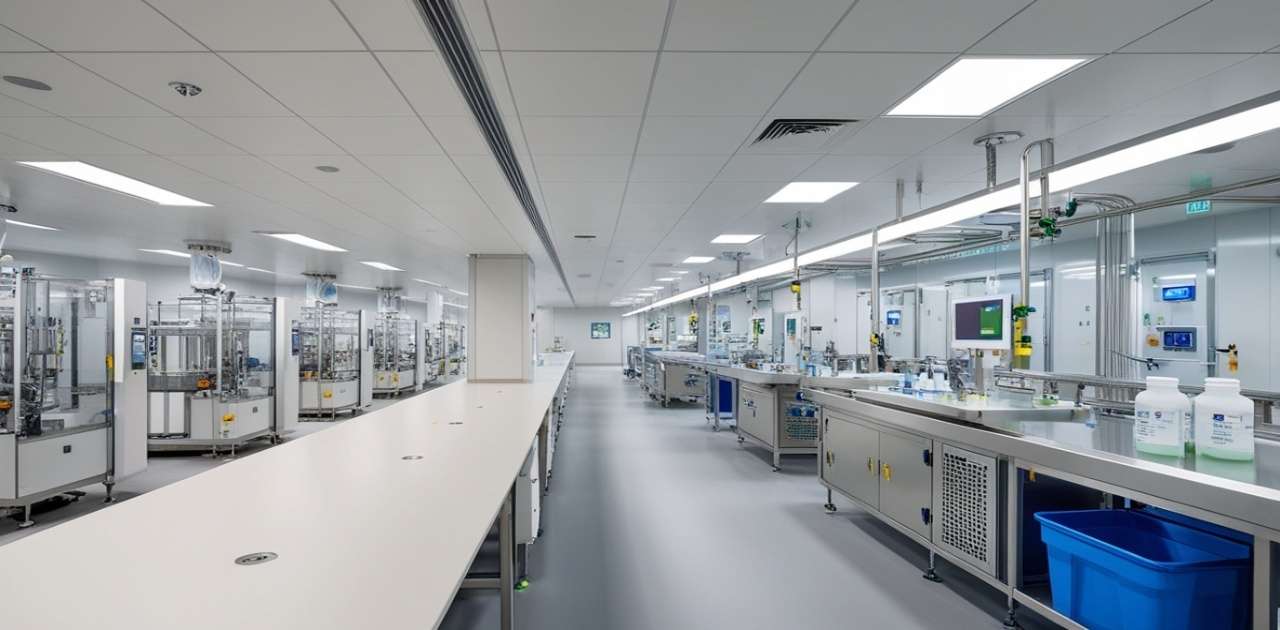Buildings and Facilities Sec. 211.42 The design and construction of buildings and facilities play a critical role in the pharmaceutical manufacturing process, ensuring product quality, safety, and compliance with regulatory standards. Section 211.42 of the Current Good Manufacturing Practices (CGMPs) outlines essential requirements for facility design, construction, and operations to prevent contamination, mix-ups, and other risks associated with drug manufacturing, processing, and packaging.
Buildings and Facilities—Sec. 211.42 By adhering to these regulations, manufacturers can maintain the integrity of drug products while ensuring public health. For more information about CGMP practices, check out our detailed guide on CGMP Guidelines for Lyophilized
Compliance Focus: Adhering to Section 211.42 helps manufacturers maintain drug integrity and safeguard public health.
Resource Utilization: Refer to tools like the Freeze Dryer Troubleshooting Guide and Lyophilizer Qualification Guidelines for facility validation and operational troubleshooting.
Key Takeaways from Section 211.42 (Buildings and Facilities)
Section 211.42 of the Current Good Manufacturing Practices (cGMPs) underscores the critical role of well-designed and maintained facilities in pharmaceutical manufacturing. It mandates adequate space, defined operational areas, and specialized controls to prevent contamination and mix-ups during drug production, processing, and packaging. Adherence to these guidelines ensures product quality, safety, and compliance, ultimately safeguarding public health.
Design and construction features. Buildings and Facilities Sec. 211.42
(a) Any building or buildings used in the manufacture. Processing & packaging or holding of drugs; product size; construction and location of facilities; cleaning maintenance; and proper operations.
(b) Any such building shall have adequate space for the orderly placement of equipment and materials to prevent mix-ups between different components. Drug ‘product ‘container, closer labelling, in process material or drug product, and to prevent contamination. The flow of components, drug product containers, closures, labeling, in-process material, and products through the building or buildings shall be designed to prevent contamination. Explore our Freeze Dryer Troubleshooting Guide.
(c) Operations shall be performed within specifically defined are of adequate we? There shall be separate or defined areas or such other control systems for the firm’s operations as are necessary to prevent contamination or mix-up for the following procedures:
Buildings and Facilities Sec. 211.42 Receipt, identification, storage, and withholding

- Receipt, identification, storage, and withholding use of component drug product, containers, closures, and labeling, pending the appropriate ‘-sampling , testing, or examination by the quality control unit before release for manufacturing or packaging
- Holding rejected components, drug product container closures, and libeling before disposition.
- Storage of released components, drug product container closures, and labeling.
- Storage of in-process materials.
- Manufacturing and processing operations.
- Packaging and labeling operations.
- Quarantine storage before release of drug products.
- Storage of drug products after release.
- Control and laboratory operations.
Buildings and Facilities Sec. 211.42 Aseptic processing, which includes appropriate.
- Floors, walls, and ceilings of smooth, hard surfaces that are easily cleanable
- Temperature and humidity controls;
- An air supply filtered through high-efficiency particulate air under positive pressure, Regardless of whether flow is laminar or nonliminar
- A system for monitoring environmental condition
- A system for cleaning and disinfecting the room and equipment to produce aseptic conditions;
- A system for maintaining any equipment used to control the aseptic conditions.
Operations relating to the manufacture, processing, and packing of penicillin shall be performed in facilities separate from those used for other drug products for human use.
Conclusion Summary of Buildings and Facilities Sec. 211.42
In summary, Buildings and Facilities Sec. 211.42 emphasizes the importance of well-designed and maintained facilities in the pharmaceutical industry. It mandates adequate space, defined operational areas, and specialized controls for various processes to prevent contamination and ensure product integrity. By adhering to these guidelines, manufacturers safeguard public health by ensuring the quality and safety of drug products. Learn more about maintaining compliance in Regulatory Compliance for Lyophilized Products.
FAQs related to Buildings and Facilities Sec. 211.42
1. What is the primary objective of Section 211.42 in CGMP?
The primary objective of Section 211.42 is to ensure that pharmaceutical facilities are designed and operated to prevent contamination and mix-ups during the drug manufacturing, processing, and packaging processes.
2. Why is separate space required for penicillin manufacturing?
Penicillin manufacturing must be performed in separate facilities to prevent cross-contamination with other drug products, ensuring patient safety and compliance with regulatory standards.
3. What are the essential features for aseptic processing facilities?
Aseptic processing facilities require smooth, easily cleanable surfaces, temperature and humidity controls, filtered air supply, environmental monitoring systems, and equipment maintenance to ensure aseptic conditions.
4. How does facility design prevent contamination?
Facility design includes defined areas for different operations, orderly placement of equipment, and controlled flow of materials, which collectively help prevent contamination and mix-ups.
5. What role does environmental monitoring play in drug manufacturing?
Environmental monitoring ensures that facilities maintain aseptic and controlled conditions by regularly checking air quality, temperature, humidity, and cleanliness.
6. Where can I find resources for facility validation and troubleshooting?
Check out our Freeze Dryer Troubleshooting Guide and Lyophilizer Qualification Guidelines.


